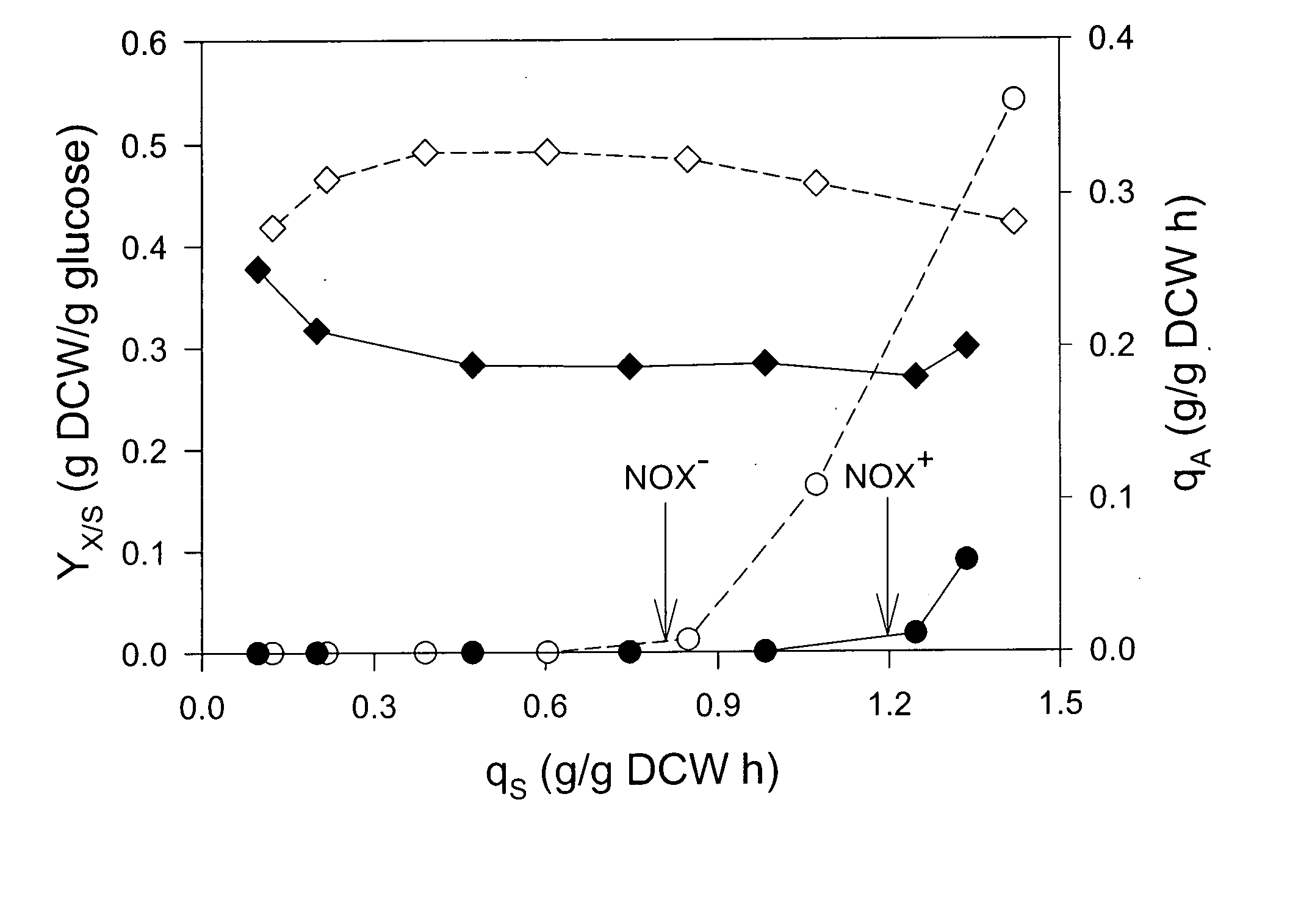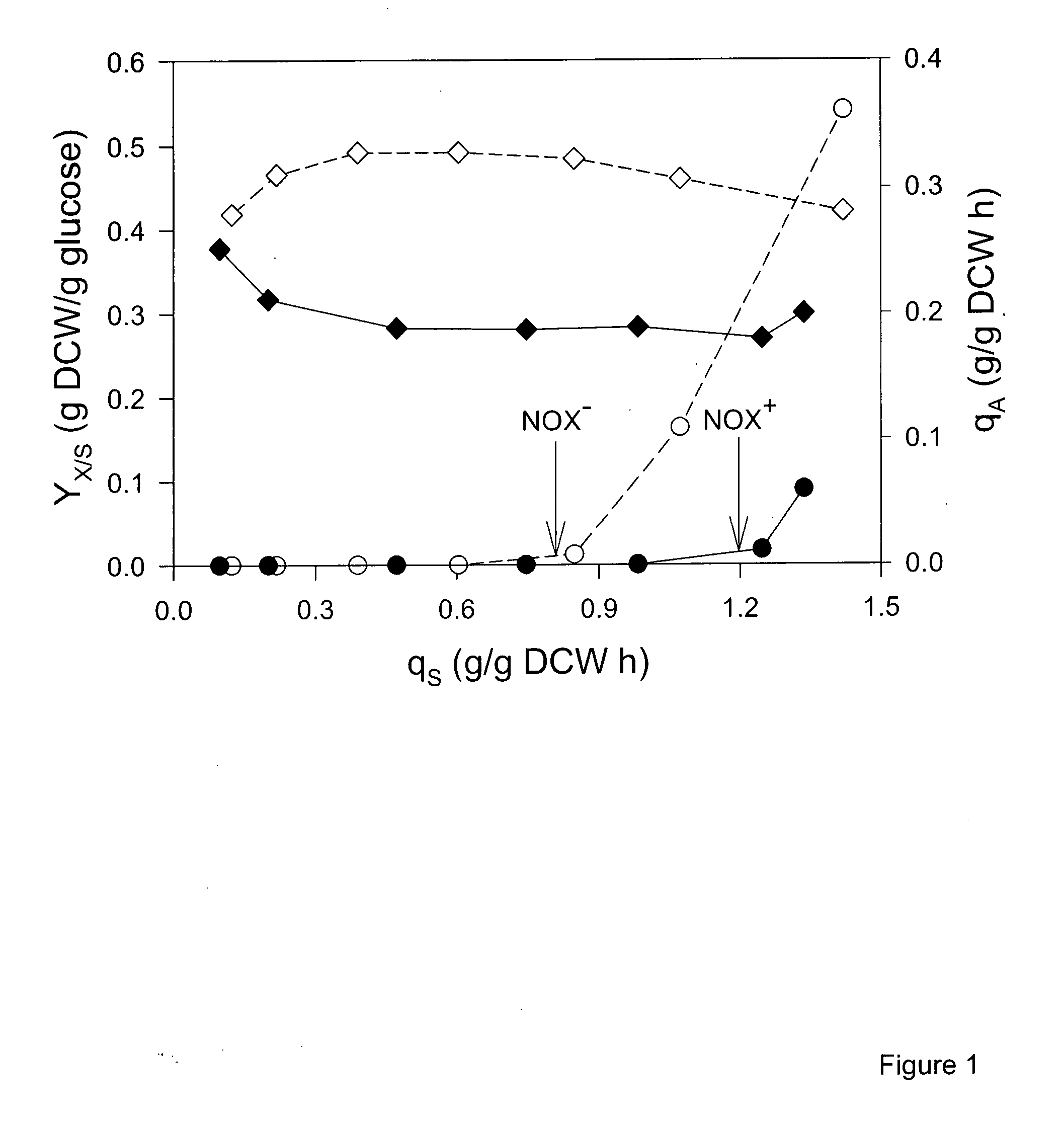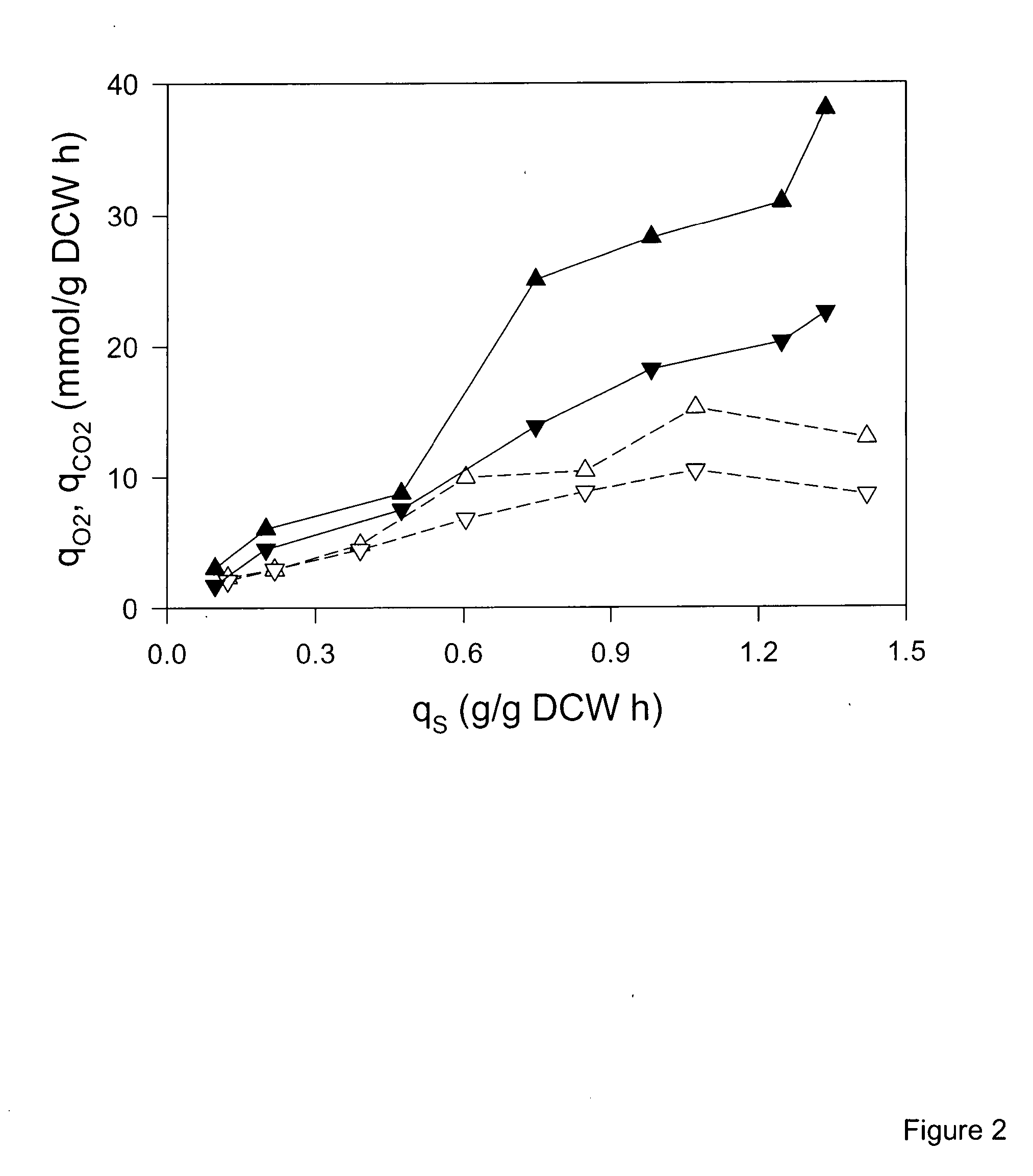Reduced overflow metabolism and methods of use
- Summary
- Abstract
- Description
- Claims
- Application Information
AI Technical Summary
Benefits of technology
Problems solved by technology
Method used
Image
Examples
example 1
[0062] Overflow metabolism in the form of aerobic acetate excretion by Escherichia coli is an important physiological characteristic of this and other common industrial microorganisms. Although acetate formation occurs under conditions of high glucose consumption, the genetic mechanisms that trigger this phenomenon are not clearly understood. This Example describes the role of the NADH / NAD ratio (redox ratio) in overflow metabolism. The redox ratio in E. coli was modulated through the expression of a water-forming NADH oxidase. Using steady-state chemostat cultures, a strong correlation was demonstrated between acetate formation and this redox ratio. A genome-wide transcription analyses of a control E. coli strain and an E. coli strain overexpressing NADH oxidase was completed. The transcription results showed that in the control strain, several genes involved in the tricarboxylic acid (TCA) cycle and respiration were repressed as the glucose consumption rate increased. Moreover, th...
example 2
[0090] Glycolytic flux is increased and acetate production is reduced in Escherichia coli by the expression of heterologous NADH-oxidase (NOX) from Streptococcus pnetinioniae coupled with the deletion of the arcA gene which encodes the ArcA regulatory protein. In this study, the overproduction of a model recombinant protein was examined in strains of E. coli expressing NOX with or without an arcA mutation. The presence of NOX or the absence of ArcA reduced acetate by about 50% and increased β-galactosidase production by 10-20%. The presence of NOX in the arcA strain eliminated acetate production entirely in batch fermentations and resulted in a 120% increase in β-galactosidase production (Vermuri et al., Biotechnol. Bioeng., 2006, 94(3):538-542, Eiteman and Altman, Trends Biotechnol., 2006, 24(11):530-536).
Materials and Methods
[0091]E. coli MG1655 was the host strain used in this study. QC2575 (MG1655 arcA::tet) was kindly provided by D. Touati (l'Institut Jacques Monod, Paris, F...
PUM
| Property | Measurement | Unit |
|---|---|---|
| Fraction | aaaaa | aaaaa |
| Fraction | aaaaa | aaaaa |
| Volume | aaaaa | aaaaa |
Abstract
Description
Claims
Application Information
 Login to View More
Login to View More - R&D
- Intellectual Property
- Life Sciences
- Materials
- Tech Scout
- Unparalleled Data Quality
- Higher Quality Content
- 60% Fewer Hallucinations
Browse by: Latest US Patents, China's latest patents, Technical Efficacy Thesaurus, Application Domain, Technology Topic, Popular Technical Reports.
© 2025 PatSnap. All rights reserved.Legal|Privacy policy|Modern Slavery Act Transparency Statement|Sitemap|About US| Contact US: help@patsnap.com



